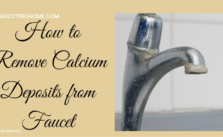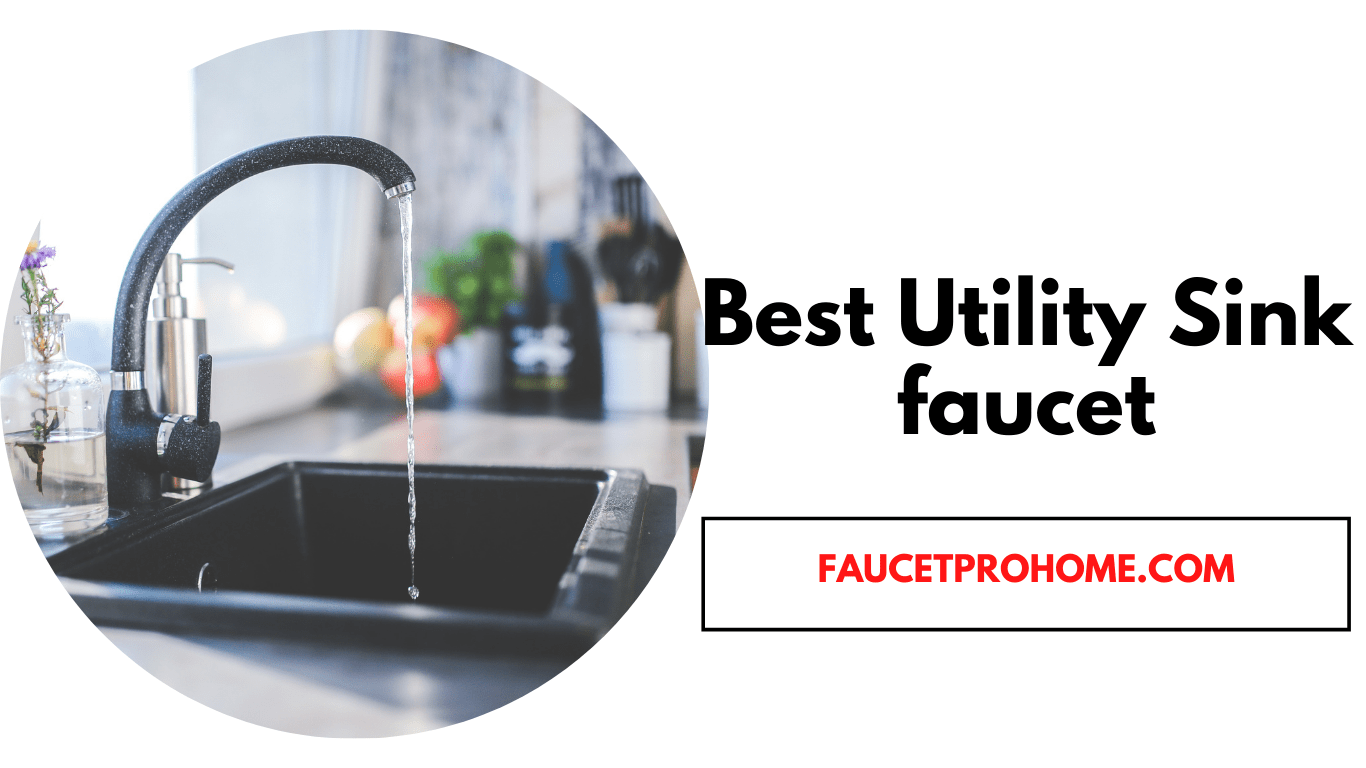
How to remove hard water buildup from faucets?
Calcium deposits are a common problem in the plumbing system. They can cause by many factors, including hard water, high-temperature water, and low water pressure. The deposits can cause a variety of problems in the plumbing system. The calcium deposit known as limescale. It is a hard mineral deposit that accumulates on surfaces inside pipes and fixtures. When it builds up, it can restrict flow or cause clogs. The calcium deposit usually caused by either hard or softened water. These types of water contains high calcium carbonate or magnesium oxide levels, respectively.
These types of water cause the formation of calcium phosphate. This compound reacts with calcium carbonate to create the white powder known as limestone. Calcium deposits can described as a solid, white composite material found in water systems and moving objects such as pipes and faucets. Calcium deposits usually caused by hard or softened water, which contains high levels of calcium and magnesium.
The deposits can also cause by well water high in sulfate, which precipitates the calcium. The most common type of calcium deposit looks like a slimy, gray substance. The substance found inside pipes or around faucets. In some cases, it can cause plumbing to malfunction and drain slowly as the buildup forms a barrier between the line and water. A calcium deposit can also appear in the water, looking like streaks or spots of gunk on glass walls.
For this reason, it is important to clean and maintain the plumbing system. If you notice calcium deposits outside your home, it may be due to a lack of water pressure or too much pressure. If your home is located in an area with hard water, you may need to use a water softener. It is important to know the source of the problem before taking action.
Why is Hard Water Residue a Problem?
Although water is a major component of our daily lives, most of us take it for granted. But if you’ve ever noticed that your water seems a little different after you take a shower or a bath or that your water appears cloudy, you may have discovered that your water is hard. Hard water can cause some problems, including:
Minerals cause hard water. Usually, calcium and magnesium are deposited on the surface of pipes and fixtures. This residue can create a film on the surface of the lines and institutions, which can clog them and cause water to be inefficiently used.
Hard water can cause problems in your home. For example, it can cause water to be absorbed by your carpets and drapes, making them softer and more prone to wear. It can also cause your dishes to be coated with a film of soap residue. This can lead to water spots on your words, affecting your appetite for your meals.
Hard water can cause problems with your skin. Hard water can cause your skin to be dry and rough. It can also cause itchy, irritated skin, leading to issues such as acne.
Hard water can cause problems with your hair.
Hard water also lead to calcium deposit in the faucets that need to be removed.
How to Remove Hard Water Buildup from Faucets | Cleaning tips
Hard Water Buildup From Faucets
The Hard water buildup can be a problem for many homeowners, and you may be wondering how to remove hard water buildup from faucets. Hard water buildup from faucets can be caused by various factors, such as using older plumbing, improper flushing, or water from a water softener system.
The most common causes of hard water buildup are:
Old plumbing. Old plumbing is often the culprit of hard water buildup in the home. Water sitting in the pipes for a long time can cause the lines to clog. It can also cause the lines to corrode, which leads to the need for expensive plumbing repairs.
Improper flushing. Water that is flushed down the toilet can cause hard water buildup. The pipes in your home are meant to be washed, but if the water is not completely flushed, it can build up in the lines.
Using a water softener system. Using a water softener system is a great way to prevent hard water buildup. It is easy to use, removing the minerals from the water. It will also ensure that your water is crystal clear.
Use of distilled vinegar to remove hard water buildup from faucets
You can hire a plumber to come out and clean your faucets, or you can use vinegar to remove the buildup.
To remove the buildup, pour a few cups of vinegar into a pan or container. Let the vinegar sit for at least 15 minutes, and then use a clean sponge or rag to scrub the faucet.
The vinegar will soften the hard water buildup, and you can use a plastic scrub brush to remove it.
The next time you clean the faucet, pour a cup of vinegar into the pan and let it sit for 15 minutes before washing it again.
The vinegar should soften the buildup, and you should be able to clean the faucet easily.
Note: Do not pour vinegar directly into the faucet.
Use lime /citric acid to remove hard water buildup from faucets.
You can also use lime /citric acid to remove hard water buildup from faucets.
You will need to have lime juice, a cloth, and a sponge.
Get the lime. Now squeeze the lime to remove all the juice.
Once you have pressed the lime, let the lime juice sit for 5 minutes.
Now squeeze the lime again to get rid of all the lime juice.
Take a sponge and rub it around the faucet.
Now pour the lime juice into the sponge.
You can use the sponge to rub the lime juice into the faucet.
Once you have done this, rinse the faucet with water.
Use soap to remove the lime from the faucet.
Now use a paper towel to dry the faucet.
How to use a lime / citric acid to remove hard water buildup from faucets.
Commercial cleanser ( Sulfuric acid, muriatic acid) to remove the hard water buildup in faucets
Many hard water buildup cleaners are on the market, including dish detergents, cleansers, and dishwashers. It’s a good idea to use an affordable product like this one. However, it’s a strong product. For example, muriatic acid is an extremely powerful acid. It can burn your skin. Wear gloves, and do not use your hands when using the acid. They work like magic, but a small spill can damage your skin, tile, or sink tub. You should mix one part of an acid cleaner with three pieces of water. This step will help to lower the acidity in your cleaning solution.
Don’t use your hands when washing dishes with a hard water buildup cleaner. If you accidentally get some on your skin, wash it off immediately with soap and water. If you notice any rusting on your kitchen appliances, don’t try to clean it off with a water softener. The salt used in these products will cause the metal to rust faster. The best way to remove rust is to scrape it off.
Never use a dishwasher without running a cycle on it first. This will prevent any buildup of minerals on your dishes. It would help if you always run your dishwasher on a full load before using it. If you do not, then you may have a problem. When you have no water left in the tub, the detergent will not be able to do its job. It will help if you run a cycle on your dishwasher to ensure you are using the right amount of detergent.
Before using a dishwasher, check the water level in the tub. If there isn’t enough water, it will be harder for the detergent to dissolve. Always remember to rinse your dishes after use. This prevents any minerals from being left on your words. You can also save money by using a slow-speed sprayer when rinsing.
Install water filtration to avoid the problem caused by hard water
As we had discussed, there are different methods through which we can solve the problem caused by hard water. But all of these methods are organic and take lots of time to show the results. But if you never want to face this problem, you can install a filter.
Although this may be true, it is very costly. The best thing is that you can install water filtration to avoid the problem caused by hard water.
The installation of water filtration is a very easy and fast process. If you want to know about the structure of water filtration, then you can read the article till the end.
Installing Water Filtration
The installation of water filtration is very easy. You can install it at your home or office or anywhere you want. The installation process is easy, and you can install it instantly.
The first step is to know about the filter type and its size. Once you have the style and size, you need to buy the filter. You need to buy a filter that has the size and type you want.
The next step is to install the filter in the water. You need to place the filter in the water. You need to make sure that you put the filter in the right position.
The last step is that you need to connect the water. You need to make sure that you click the water correctly.
Now, the installation of water filtration is done. You can now use the water from the filter.
Remove old faucet and replace with new one if needed.
Sometimes, hard water stay in pipes and faucets for long period of time and we don’t notice that. It cause blockage. Check it, if you find that hard water and calcium deposit is more and cant remove easily the go for a new faucets. We had reviewed top faucets for kitchen sink.
Top Selling Pre Rinse Kitchen Faucets in 2022










0 Comment
[…] Solution: To combat this problem, you can install a water softener system. You need to remove the hard water buildup from faucets. […]
[…] How to remove hard water buildup from faucets? […]
[…] How to remove hard water buildup from faucets? […]